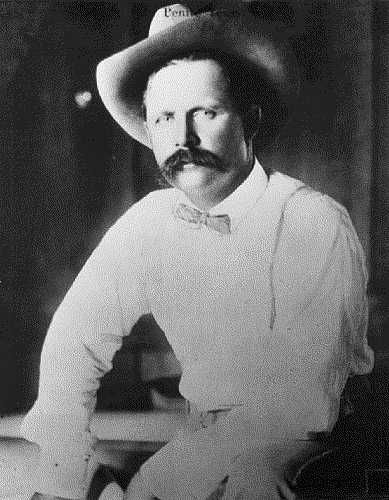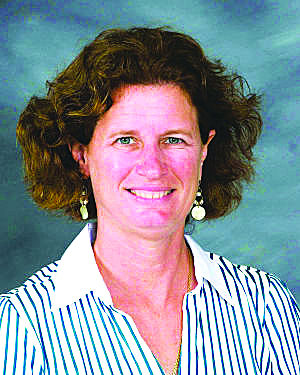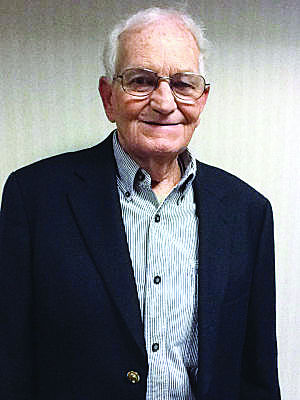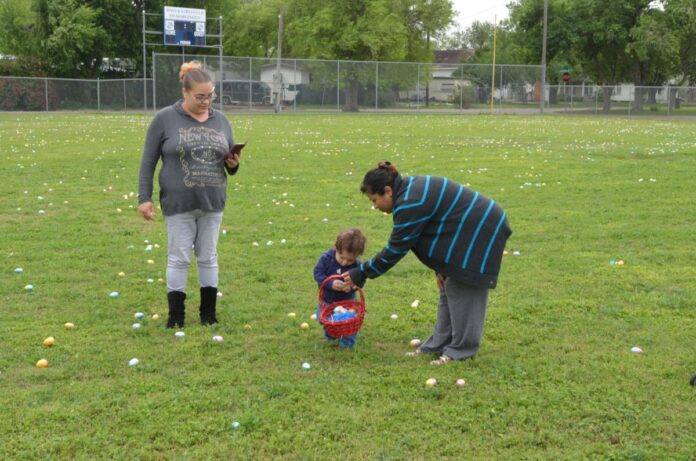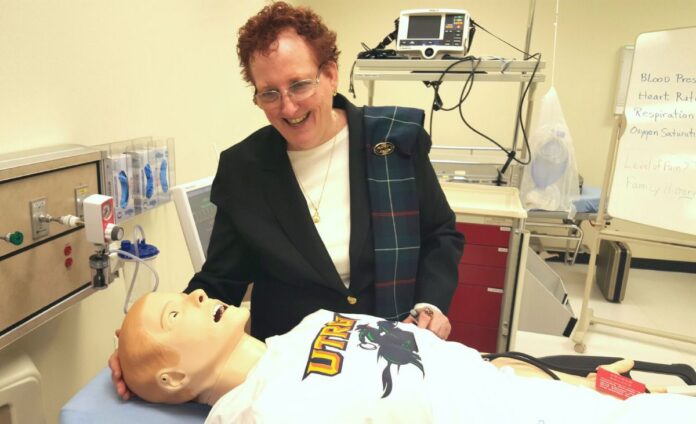BY NORMAN ROZEFF
EDITOR’S NOTE: This is the next installment in an ongoing series on San Benito’s Sam Robertson. Find previous parts at www.valleystar.com.
By September arrangements had been made to lease the mill. Receiver S. L. Dworman negotiated to operate the plant for the 1913-14 season to commence in about two months.
The sugarcane crops at both San Benito and Brownsville areas were looking good. The San Benito mill was expected to grind 1,000 ton/day.
At the end of October it was announced that E.N. Green of San Benito would be superintendent. He was characterized as a sugarcane factory expert.
The Court of Civil Appeals authorized the issuance of recoverer’s certificates in the amount of $5,000 for which to finance the initial cash flow of the mill. In mid-November W. D. Stevenson, D. F. Mann and 24 sugar factory employees arrived on scene to put the plant into operational shape.
The prospects were to grind about 60,000 tons cane, primarily from around San Benito but also from the Piper Plantation, just south of Brownsville.
Sampling in late November indicated the cane had a sugar content of 200 lbs/ton. As December commenced, 2,000 tons of cane were delivered to the factory, which was struggling to overhaul neglected machinery.
The day before Christmas the mill closed after an uninterrupted run of 20 days during which it ground more than 15,000 tons and produced 20 carloads or 500 tons of 96 degree sugar.
At that time new equipment was to be installed in the boiling house with the expectation that the final product would have a purity of 99 degrees. Upon resumption 50 to 60 more days of grinding were hoped for as well as the manufacture of 75 carloads more sugar. Around San Benito 500 men were employed with sugarcane activities at this time.
By early March 1914 the campaign ended. A deep freeze had struck the Valley on 2/25. Only hardy cabbage escaped extinction. Truck crops, including tomatoes, cauliflower, beans, cucumbers, and potatoes, were badly hurt in many areas as the thermometer dipped to 28 degrees.
The San Bento mill wound up grinding 33,384 tons of cane in 90 days and recovered 105 carloads (ca. 2,625 tons sugar). This calculates to only 157.3 lb/ton sugar content, yet the mill proclaimed the total was double that made in 1912-13 and the yield of sugar 50 percent more. That would put the 1912-13 sugar content in the neighborhood of only 105 lb/ton. Both these levels represent very sorry sugar content.
In June Sam Robertson advanced a plan to promote more cane tonnage for the mill.
He stated that: “If as many as 4,000 acres can be contracted, capitalists who would take over the mill will advance $25 per acre at various stages in the growing season and will guarantee for a period of six years to pay a minimum of $3.25/ton for the cane. The increase of the acreage as proposed will give the mill a full run with a greater opportunity for profit than ever before.
While the acreage in this section has shown a tendency to decline this season, the proposition to advance $25 per acre to finance the growing of the crop is meeting with marked favor. It is possible that a large number of the small farms will be partly planted in cane, the quantity being limited to such quantities as the farmer himself can handle.”
As had been the case for several years the majority of San Benito farmland had been in corn (13,000 acres) and cotton, with cabbage being the primary winter crop. In March 1914 Emmert and Robertson resigned as joint receivers of the SBL&W Co. E. F. Rowson of Brownsville replaced them, but by May it is S. L. Dworman, receiver, who posts a notice for creditors of the mill to file claims in the 53rd Judicial Court, Travis County by 6/15/14. The onset, in August 1914, of what was to be World War I quickly excited cane growers in the Valley. If they were starry-eyed enough over prospects of higher sugar prices, the promoters with something to gain painted even rosier pictures for them.
When the assets, placed at $117,300, of the financially plagued San Benito Sugar Manufacturing Company were put up for sale in December 1914 to satisfy creditors, an indication of some of the equipment in the plant is revealed. Dworman evaluated the bids. Among them was a property chattel mortgage of $4,614 from the Morris Engineering Co.; a claim by W. A. Paine for three 501HP motors; a Beaule and Morris chattel claim of $4,690; another by the American Hoist and Derrick Co.; a bid of $3,700 from the Erie City Iron Works for vertical tube boilers with fittings and fixtures; and the large bid of $36,612 by the Hoover-Owens-Rentscher Company of Hamilton., Ohio for their Hamilton Corliss horizontal non-condensing engines.
These powered the mill train. [This company was to experience some notoriety at the beginning of World War II for their notoriously unreliable diesel engines furnished U.S. submarines. Strangely, the Erie City Iron Works’ large Houston warehouse previously used to store the jobber’s many steel products has been recycled and is now a site for numerous art galleries.] Frank C. Pierce attempted to “steal” all of the above items and more with a paltry bid of $36,288. His bid was rejected.
By February of 1915 a complicated series of dealings were put into motion. The San Benito plant was transferred by receiver Dworman and a special commission to Hiram Hart of Brownsville for $30,000. Hart in turn conveyed it to the New York millionaire, Stanley Gifford, as trustee. This included all property and improvement except some machinery of the original furnishers. The factory had a capacity of 1000 tons per day with 30” diameter by 78” long mill rolls.
In July, company officials let it be known the plant would be operated for the 1915-16 season. Charles Dierke, the engineer in charge, began to revamp the poorly maintained equipment with expenditures of $25-30,000 expected. W. P. Miller of New Orleans was contracted to operate the mill. He had been in Cuba for several years with the American Sugar Refinery. Perhaps, in an effort to corner the Valley’s scant supply of cane, it was announced in August that the San Benito mill expected 27,000 tons to grind and might be the only mill to operate in the Valley for the 1915-16 season – this according to its manager, W. P. Miller and director Hart. A production of 3,000 tons sugar was forecast.
Bullish attitudes for sugar were again sweeping the Valley. Indications were that in 1916-17 the mills at Donna, Harlingen, and Brownsville would operate. There was some speculation that the Ohio & Texas mill might be moved southeast of Brownsville to locate it closer to the majority of the cane plantings. Hopes were buoyed when the national administration of Woodrow Wilson recommended the retention of the sugar tariff. The federal government needed the revenues to cover increasing military expenditures to deal with both Mexican bandit incursions and the possibility that the country would enter the European war. In addition an emergency tax would be imposed.
This period coincided with the height of bandit activities. The famed Norias Raid, in which five bandits were killed in a skirmish at the King Ranch division ranch house, had occurred in early August.
Probably no single incident than the following indicates the trust that Sam Robertson had established in the Hispanic community over years of his openness and fair handedness. After the major incident of the Norias Ranch raid in August 1915, to diffuse the tense situation closer to home, San Benito law enforcement officials asked the area’s Mexican-Americans to voluntarily turn in arms and ammunition. More than 200 individuals complied with this request. Considering the situation at the time, this was an act of great faith. In the interim the famous train wreck had occurred outside of Brownsville. Three innocent individuals were killed when bandits derailed the engine, robbed the train, and burned 185 feet of trestle across a resaca. Within two days of this incident three soldiers were killed in a skirmish near Mission.
After the expenditure of about $40,000 and the hiring of 30-40 men the mill was made ready. Despite the unsettling times, the mill began grinding cane on the 7th of December, 1915. President Gifford soon was in town to promote cane planting for a 1916-17 season. He pressed to have 100,000 tons available in order to enable a 50-day grinding campaign to occur.


